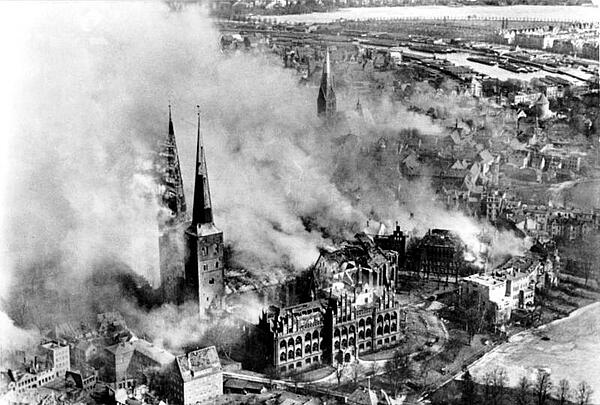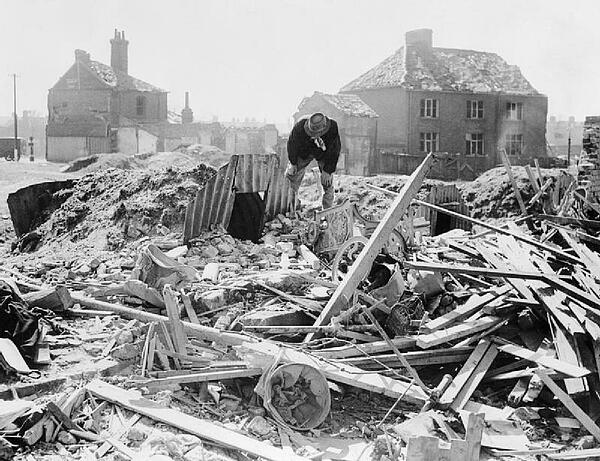The Baedeker Raids of 1942
The Baedeker raids of 1942 were a series of destructive raids against towns and cities in Britain. Their name refers to the Baedeker guidebook to historic towns in Britain, which were used by the Germans to choose targets. The guide rated cities to reflect their historic value - the sites rated three stars became German targets.
On 28 March 1942, the RAF bombed the German city of Lűbeck. The raid killed more than 1,000 people and destroyed large parts of the historic centre. Hitler retaliated by launching the Baedeker raids.

On 23 April, less than a month after the attacks on Lubeck, the Germans attacked Exeter. The air raid caused extensive damage and killed 70 people. The day after the raid, Baron Gustav Braun von Sturm said:
“'We shall go out and bomb every building in Britain marked with three stars in the Baedeker Guide.”
The Luftwaffe launched another raid on Exeter the next day and again on 3 May.
Between 24 April and 29 April, Bath, York and Norwich were bombed. The Luftwaffe responded to the RAF’s ‘1000 Bomber’ raid on Cologne by targetting the city of Canterbury. It bombed the city three times in May and June.
The attack on Bath killed 417 casualties and destroyed and damaged more than 19,000 buildings.
In total, 1,637 civilians were killed and 1,760 injured during the Baedeker raids. Over 50,000 homes were destroyed or damaged. The Guildhall in York was one of many historic buildings to be damaged in the raids.
The Luftwaffe suffered heavy losses during these raids, with many being shot down in action. The raids also showed how the British morale could survive sustained bombing of civilians.
See also: The Battle of Graveney Marsh

MLA Citation/Reference
"The Baedeker Raids of 1942". HistoryLearning.com. 2026. Web.
